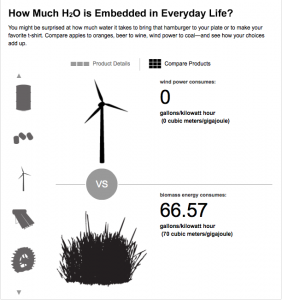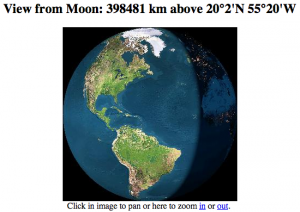The National Geographic website has several interactive activities, but one that I found particularly interesting was titled “The Hidden Water We Use,” which describes the amount of water embedded in objects we use everyday. It describes how much water is used in each step of production of things like food and energy.

One that I found very surprising was the water used in producing 1 pound of chocolate – which I happen to eat a lot of! To make 1 pound of dark chocolate, 3,170 gallons of water are used. (3,993.8 gallons goes into making of 1 pound cocoa paste, and 6,091.7 gallons go into making 1 pound of cocoa butter!)

Another interesting part of this website was comparing products. I compared wind energy and biomass energy and found that wind energy consumes no water, while biomass energy consumes 66.57 gallons of water per kilowatt hour. Also interesting was that hydropower consumes 20.92 gallons of water per kilowatt hour and oil consumes 1.01 gallons of water per kilowatt hour.









